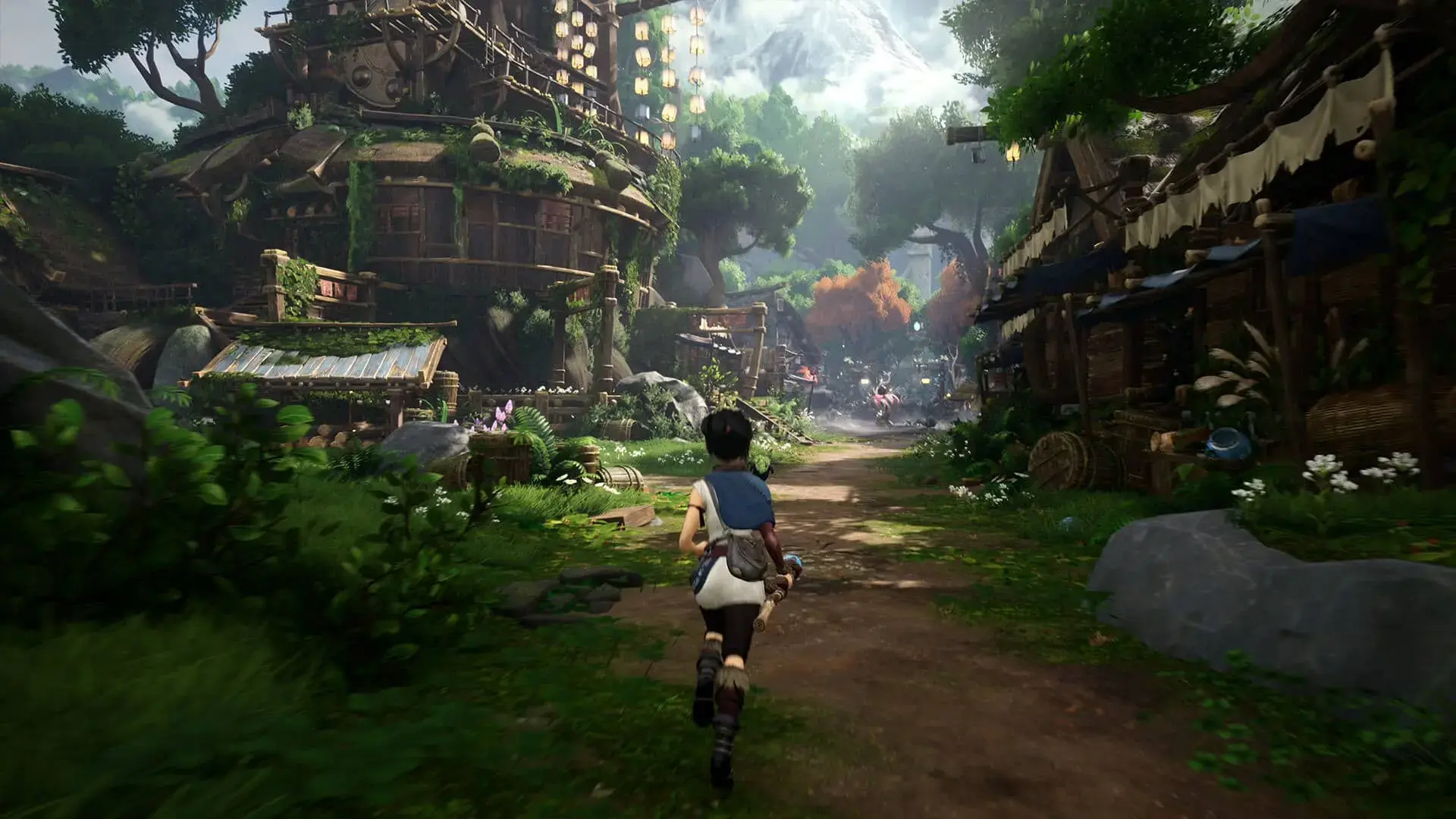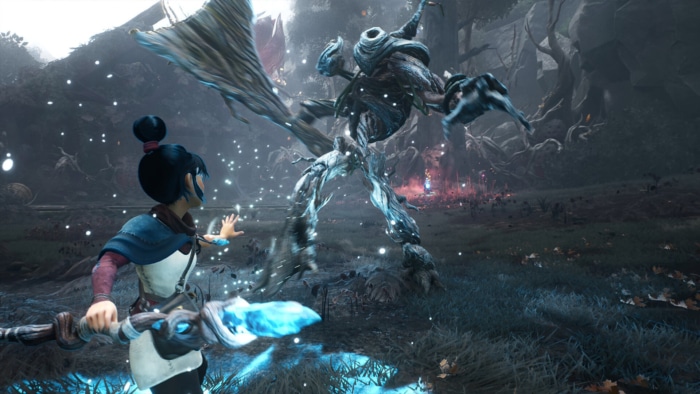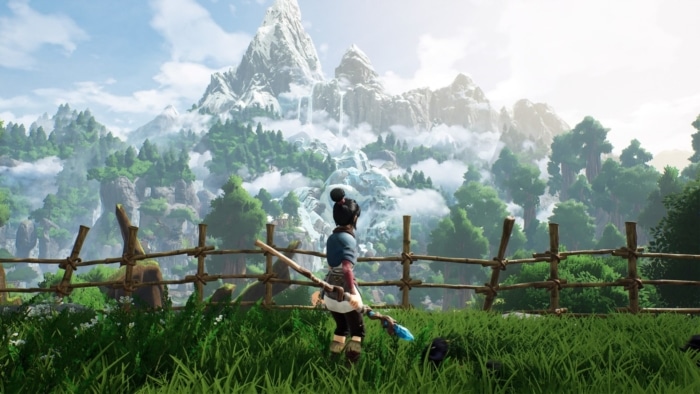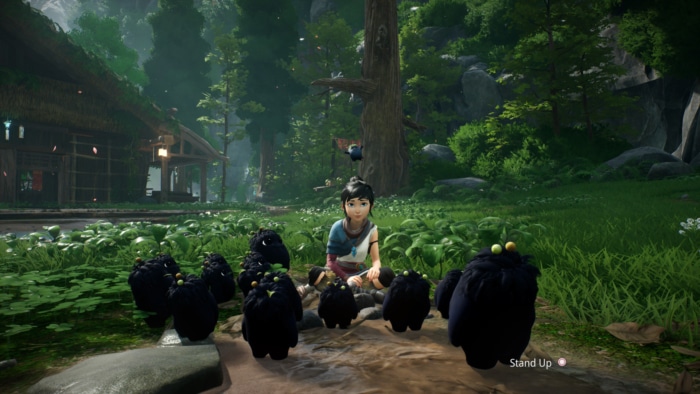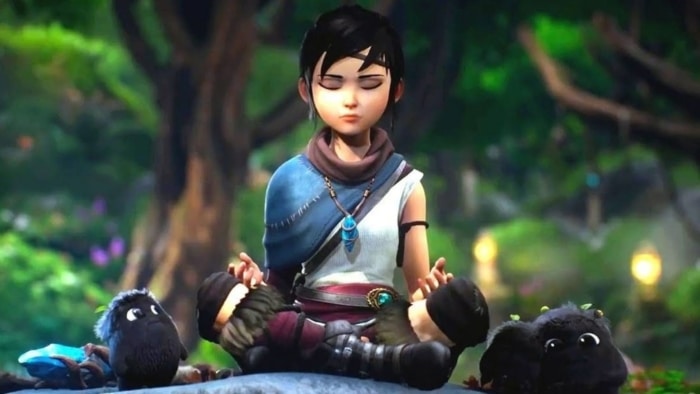Kena – Bridge of Spirits (PS5 Review)
-
Visually delightful.
-
Well-polished gameplay.
-
Strong exploration and item collection sub themes.
-
Exciting combat.
-
Generally lacks originality.
-
Short main quest and storyline.
It’s still early days for the current generation of consoles, but we’re finally starting to see some releases that will dictate what this 9th console generation really means. Kena – Bridge of Spirits is a perfect example.
Studio Quality Animation
The very first thing anyone notices about Kena is the way it looks. There is no denying that this game is simply beautiful. Its cutscenes are truly cinema-quality and if you were to casually walk into a room where one is playing, you’d be forgiven for thinking that it was a new Pixar or Dreamworks film that you hadn’t heard of.
Coming home from Frozen II at the cinema a couple of years ago, I chatted animatedly with my children about how incredible the whole thing looked and I sit and look at Kena with the same open-jawed response. This is a console game that can stand tall against the biggest offerings Disney has—and that’s some achievement.
It’s not just in terms of graphical quality. The hand of experienced animators is all over Kena, with characters that move and speak with accuracy, and have facial expressions and little movements that make them seem real. It has landscapes that you could freeze and make into posters you’d be pleased to have on the wall. It’s a fully realised world, complete with people, spirits and little cute creatures that are utterly endearing. Very impressive stuff.
The graphical quality doesn’t drop too much once you leave the realm of pre-rendered cutscenes and travel into the game itself. Yes, there’s a difference between the two, but it’s not so much that you notice. In-game graphics are beautifully lit and filled with details. Early on, you come across a waterfall with its enticing pool at the base, and Kena swims a delicate breaststroke through the water. There are tangible leaves that float here, a shimmering view of clear water onto rocks, and light that streams from the early-autumn sky illuminating and casting shadows in equal measure. It’s so realistic and compelling that I happily spent a few minutes just swimming around, joyfully relaxing in the calm lake.
There are a couple of flaws. Collision detection with objects can get a little fluffy, and Kena occasionally steps through a log or floats above something in an ethereal way when really her feet should be tight to the ground. It’s nothing we haven’t seen before in thousands of games, but here it feels a little jarring. There’s a desire to want to label this visual masterpiece as perfect and that’s stolen with these minor issues. Still, there is no doubt that Kena’s graphics are a tour-de-force and something about which the developers should be rightly proud.
Kena’s Own Personal Rot
I do not know why the cute little creatures that act as the protagonist’s companions have been named ‘Rot’. It seems almost unfair, given their cute (and unmouldy) nature, but it’s a simple name (which like ‘sheep’ feels both singular and plural) and it sticks in the mind straight away.
The Rot are small, black, and energetic, and serve as Kena’s friends and allies as she explores the world. At first, they seem pretty pointless, but it soon becomes clear that they act as a mechanical hook for the game itself. It is with the Rot that you can bring bloom to areas of desolation, stun and confuse enemies, and even move enormous boulders. They gather in number around you, ready to hop and run to help in any way they can.
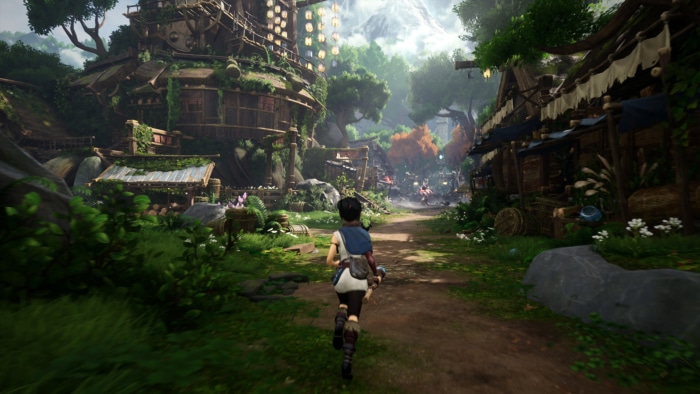
Enjoying the Rot is intrinsic to enjoying the game itself. If you don’t like the little creatures, then many of the title’s more enticing moments will be lost on you. Even a simple thing like standing and looking around an area is enhanced by their presence, as the little creatures will climb and clamber on the scenery to give it a deeper and more personal sense of realism. They are always there, running behind you, sitting on your shoulder, or jumping up and down in excitement. Indeed, there’s an entire button dedicated to sitting on the floor to play with them, and even a ‘sneeze’ command to have the littlest one achoo in delightful kawaii levels of cuteness.
The Rot are the heart of the game, and power the essence of the game’s longevity. For, while the storyline playthrough is relatively short (coming in at under ten hours for most players), exploring the world with your Rot companions offers many, many more hours of enjoyment.
It’s All About the Hats
Rarely do you see a game where ‘collecting hats’ is a major sub-theme, but Kena – Bridge of Spirits takes this idea and ramps it up to eleven.
The hats in question do nothing, being purely cosmetic in nature, but finding them brings a smile and a desperate rush to see what they look like on. Not on Kena, the main character, you understand, but on one of the little Rot.
There are Rot with mushroom hats, Rot wearing acorns, Rot with wide-brimmed straw hats to keep the sun out of their eyes. There’re Rot who have frogs sitting on their heads, and others with bunny ears. In total, there are 51 hats available to collect in the game and, if cuteness is your thing, then you are definitely going to want to get them all.
Kena is an open-world exploration game, with a strong main storyline and compelling characters, but it’s in hat-collection that the hours will clock up, turning it from a quest that stretches over a couple of evenings, into weeks of secret-area searching. You will literally leave no stone unturned in the search for funnier and brighter headwear.
Helping Spirits
Kena’s main storyline is fairly formulaic. There’s a chance this could be taken as a bad thing, but it isn’t. Instead, the simplicity of the plot allows you to become engrossed in its charm.
It follows a basic structure of; learn about a spirit with a problem, discover ways to solve it, find stuff and do puzzles to get to areas (to find more stuff), fight the boss, and then move on to the next area where you do it all again. There are plenty of other great games with a similar level of wash, rinse, repeat and Kena haven’t tried to break the mould here.
Despite not being all that unique an experience, Kena does pull off this time-honoured gaming structure with a polished shine. Everything about the game feels great, with puzzles that can leave you stumped for just long enough before you get them, and combat sequences that are well contained and exhilarating. Again, though, it’s the story and cutscenes that keep it all together, with beautiful film sequences you feel honoured to be a part of.
Fighting Corruption
Combat in Kena is disarmingly fun. At first glance, it takes a very basic formula of main-character wielding a big stick and offers only a couple of move types (fast and light, and slow and heavy). Even as the game progresses, there’s very little that builds on this core mechanic, and you swing the big ol’ stick around throughout the adventure, but it remains surprisingly deep.
First of all, leave your preconceptions at the door, the combat is not easy. Kena has three difficultly levels, and even with all the experience of a hundred similar types of combat in games gone by, nailing enemies on even the normal setting requires skill and concentration. Yes, the first few enemies fall with a few triple-button combos, but the sheer swarm of them, coupled with some interesting bad-guy designs and move-sets, means that soon you need to dig in, learn timings and move sequences, and flick your fingers on the controller getting everything just right.
One of the most staggering layers of difficulty is the lack of healing. Yes, it’s possible to revitalise yourself mid-fight, but it’s not as simple as hitting a button to chug a potion or chuck out a heal spell. Healing in Kena requires you to have charged up your ‘courage’ meter enough the Rot are willing to help and then aim them at the right flower. Not only can this be tough while being smacked about from behind, but it also means you’ve used your Rot for the next while and they’re not there to help you in combat until that courage circle is all yellow again.
Oh, and there are only a couple of healing flowers per combat area, too.
This has the effect that every hit you take while fighting in Kena really counts. You will want to learn to shield and parry, and getting those counterattacks in is imperative. Plus, expect to spend a lot of your time rolling out of the way, trying to come in behind baddies, and seeking a weakness in their armour.
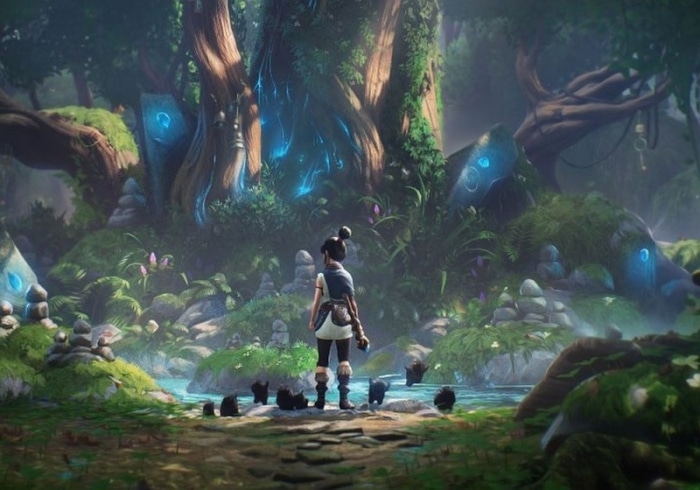
It’s often frantic, and the sense of achievement when you clear an area is rewarding, taking the game from fast-paced, music-filled action back to the general pan-pipe serenity that drew you in in the first place.
On the plus side, combat in Kena is never random. Each forms a planned section, either a mid-quest fight to open a new area, or a boss fight, or one of the select cursed chest combats that come when you open the wrong sort of treasure chest. There are no enemies waiting to kick you off a ledge or make the general exploration of the world a tense affair, leaving you to relax and enjoy the scenery when you need to.
Puzzles and Exploration
Kena – Bridge of Spirits is a game that builds a lot on the adventures that have come before it. Touches of Tomb Raider, Prince of Persia and Uncharted are all noticeable in the way you wander through the world, clinging tight to ledges, moving boulders to get to higher locations, and jumping from precarious platform to equally precarious platform.
Though it is a game that’s bringing the delights of the PS5 to the fore, it has its roots very much in those classic games from the 90s and early 2000s. As such, it can sometimes feel as though Kena isn’t bringing anything particularly new to the table, and that’s probably true, but it is a fantastic iteration of the genre that develops and tweaks all of these established ideas to bring them all together with a certain level of professional polish that other titles can only dream of.
The puzzles are very well-paced, the difficulty level of the exploring is never too easy while also keeping short of ever being too frustrating, and the interaction with the Rots provides a couple of quirks to make it have a little extra to add that’s of its own design.
In this way, Kena is unlikely to be held up in years to come as a genre-defining title, but it is one of the more solid stepping stones that take us from where we are to a yet-unknown future of open-world questing action adventures.
Conclusion
Kena – Bridge of Spirits is a fantastic title for this current crop of PS5 games. It is well polished, sublime to watch and engage in, and holds enough difficulty to provide a skill-intensive challenge for even experienced gamers. It does feel, however, that its core market is younger gamers rather than adult veterans. For younger teenagers who are not well acquainted with similar games that have come before, Kena offers a fabulous take on the genre and is a perfect place for an introduction. It’s equal parts relaxing and frenetic, knowing just when to push and when to make it easy (because sometimes you do just want to enjoy the scenery as you seek out another hat).
There are no complex skill trees here, nor demonic monsters designed to scare you witless as you attempt to survive them. There are no guns (though Kena does learn to use her staff as a magic bow), and the violence in combat is almost friendly—visually a lot closer to Skylanders than Demon’s Souls even if it takes more cues from the latter when it comes to actual fighting style.
As the first release from a new studio, Kena – Bridge of Spirits is an impressive title that deserves every accolade it gets.
And, when you tire of the content on Disney+, it gives you another quality kids animated film to watch.

